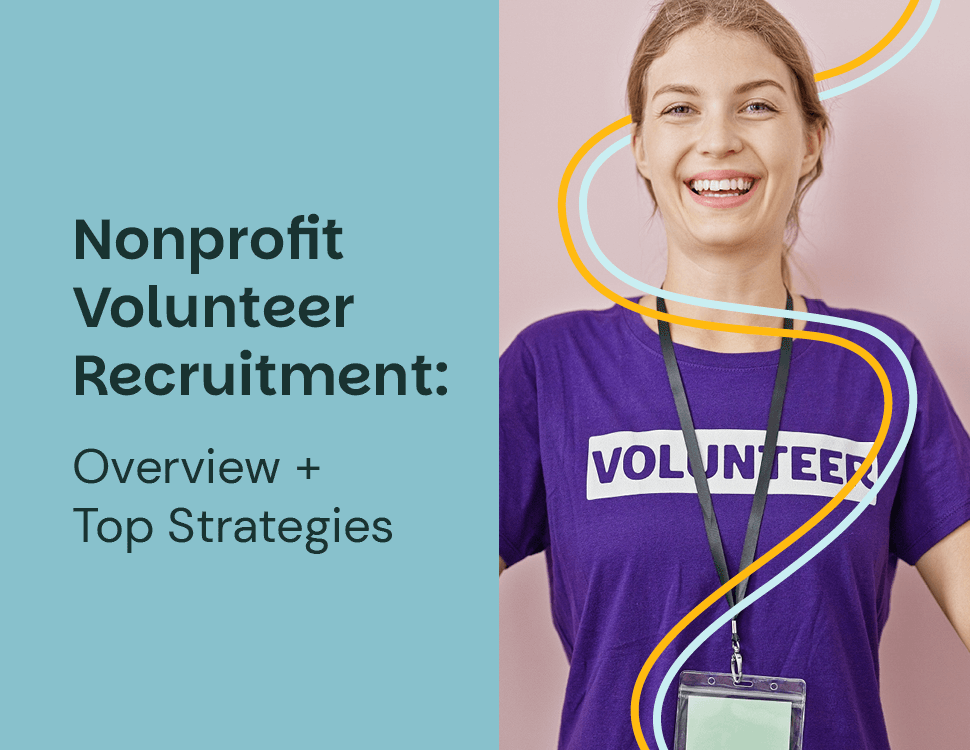When No is the Right Answer: Declining a Volunteer
One of the most frequent questions we hear from leaders of volunteers is how to decline a volunteer professionally and with kindness and we are...
7 min read
 Timothy Sarazen
Mar 26, 2025 5:29:29 PM
Timothy Sarazen
Mar 26, 2025 5:29:29 PM

Volunteers are the lifeblood of nonprofits, offering their time, skills, and passion to drive missions forward. However, attracting (and retaining) dedicated volunteers can be a serious challenge. According to the 2025 Volunteer Management Progress Report, more than 70% of nonprofits recruit volunteers year-round, yet 26% of volunteer managers cite recruitment as their biggest hurdle. Meanwhile, many volunteer managers say they lack enough time to dedicate to recruitment, and about one-third struggle with insufficient responses to their outreach efforts.
Why does recruitment often feel so tough? The nonprofit sector has become more competitive, with many organizations seeking volunteers from the same pool. On top of that, today’s volunteers expect a positive, streamlined onboarding experience—slow communication or cumbersome sign-up processes can turn them away. These factors make it essential to adopt smarter, more holistic approaches to volunteer recruitment.
In this guide, we’ll outline the essentials of volunteer recruitment, including:
Along the way, we’ll share examples drawn from real-world organizations and case studies to show how a well-executed plan can yield tangible results. Let’s get started!
Volunteer recruitment is the process of attracting and enlisting individuals to support an organization’s mission by giving their time. It’s about identifying volunteer needs, connecting the right people to the right roles, and ensuring that each volunteer understands (and is motivated by) the cause they’re supporting.
Recruitment lays the foundation for every volunteer’s experience—if it’s well-organized and welcoming, your chances of finding engaged, qualified volunteers soar. It’s why the Better Impact team believes retention begins at recruitment.
The volunteer management lifecycle includes all of the stages a volunteer goes through, from first contact to becoming long-term supporters—which begins with recruitment. Here is a quick overview of the process:

When recruitment is strong, it sets the entire volunteer lifecycle up for success. In contrast, if volunteers have a poor recruitment experience—long wait times, unclear descriptions, or minimal follow-up—they might drop out before they even begin.
A well-structured recruitment plan can transform your volunteer program in several ways:

By defining the roles you need to fill, the attributes of ideal candidates, and where to find them, your recruitment becomes more focused. You’re more likely to find volunteers whose abilities and interests fit each role well—leading to higher-quality work and more satisfying experiences for everyone involved.
A well-thought-out recruitment plan supports a sense of unity. Volunteers clearly see how they fit into your mission, and they meet like-minded people as they go through orientation and training. Camaraderie grows when volunteers are aligned with your organization’s cause and are well-informed about how to contribute.
When volunteers are recruited into roles that match their skills, they’re more likely to enjoy the work and stay motivated. Satisfaction skyrockets when volunteers feel prepared, supported, and recognized from day one. This positive energy also flows back to staff, reducing friction and burnout for everyone.
Successfully recruiting more volunteers (and making better use of their abilities) translates into reaching more community members, running additional programs, and more effectively furthering your mission. With strong recruitment, even small nonprofits can increase their capacity—particularly if they bring on skilled volunteers whose expertise would otherwise be expensive to hire.
Now that we’ve reviewed the basics, let’s dive into some essential strategies to boost volunteer recruitment.

A clear, engaging, and user-friendly volunteer page directly influences whether a website visitor follows through to apply. If your nonprofit’s website doesn’t already have a volunteer page, the best time to create one is now! If it already does, review the page to determine how you can improve engagement with it
Here are some key elements to include on this page:
It’s also helpful to add photos or short videos of volunteers in action—many prospective volunteers want a quick peek at what their experience might look like. Make sure to obtain permission from volunteers featured in these images before adding them to your site.
Once potential volunteers decide to move forward, a strong application form can significantly increase the number of completed sign-ups. Here are some tips for creating one.
Case Example: Haven House —a homeless shelter working with over 1,500 volunteers—previously used a basic web form that required manual data entry. Once they streamlined everything into a modern online form tied to a volunteer management system, they cut down on lost or delayed applications and freed up staff time to focus on real engagement.
Volunteers want to understand exactly what they’ll be doing. A well-written volunteer role description functions like a job posting: it clarifies expectations, responsibilities, and goals. When volunteers know what they’re signing up for, they’re more likely to remain committed.
All of your volunteer role descriptions should include the following information:
When each role description is clear and concise, applicants can self-select roles that match their interests and abilities. This saves time on both ends and often leads to higher volunteer satisfaction.
No matter how polished your volunteer page is, you still need to guide people there. Promotion is key—especially in a digital age—so leverage the following platforms to market your volunteer opportunities:

Track where your new recruits come from by asking a question on your application form like “How did you hear about us?” Over time, you’ll see which channels deliver the best results so you can invest more resources there.
Many nonprofits scramble for volunteers only when they’re short on help. A better approach is to treat recruitment like an annual campaign by creating a marketing calendar that includes information about:
Having a calendar helps you stay proactive. Over time, you can measure which months or tactics yield the most applicants and refine your strategy accordingly.
Word-of-mouth recommendations can be more powerful than any paid marketing. When current volunteers enjoy their roles, they’re often happy to share that experience with friends or coworkers.
Here are some ideas to leverage this type of promotion:
Case Example: Jewish Social Service Agency (JSSA) staff freed up time to interact with volunteers one-on-one after adopting volunteer management software. Those deeper relationships led volunteers to spread the word in their own circles—improving recruitment outcomes significantly.
Recruitment can scale rapidly when you partner with businesses, schools, or other nonprofits. By forging “win-win” alliances, you gain new volunteers while partners fulfill their community engagement goals.
Some potential partners your organization might work with include:
Case Example: Operation Kindness set up group volunteer days for local corporate partners, introducing the shelter to hundreds of new prospective volunteers who later signed on individually.
If you’re juggling dozens or hundreds of prospective volunteers, spreadsheets quickly become overwhelming. Volunteer management software centralizes every aspect of the recruitment process, making it easy to post openings, review applications, and communicate at scale.
By leveraging a volunteer management system, your team can access:
Better Impact’s Volunteer Impact solution is a top-of-the-line platform that includes all of these recruitment features and more to help you attract the most passionate, dedicated, and skilled volunteers to your organization. Plus, it includes tools for managing the entire rest of the volunteer lifecycle—from training to recognition and beyond—in a single, integrated system trusted by more than 3,400 nonprofits like yours!
Recruitment is the gateway to a thriving volunteer program. Done well, it leads to a vibrant, skilled, and mission-aligned community of supporters who stick around long-term. By focusing on the above strategies and using the right tools, you can foster a volunteer base that not only meets your organization’s current needs but also helps grow its future impact.
For more information on coordinating volunteer programs, check out these resources:
Featured Posts

One of the most frequent questions we hear from leaders of volunteers is how to decline a volunteer professionally and with kindness and we are...

Recruiting volunteers is a challenging yet essential task for any volunteer-involving organization. As a volunteer manager, you understand the...

In June 2023, Volunteering New Zealand launched the Volunteer Best Practice Guidelines. Since then, they’ve developed workshops and tools to support...